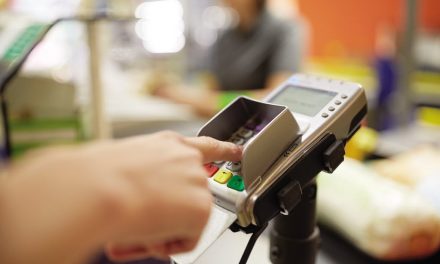Retail theft occurs in many forms. Externally, there’s merchandise theft, refund fraud, price-tag switching and credit fraud; internally, there’s inventory theft, discounted merchandise, coupon fraud and cash theft.
Regardless of what form theft comes in, each loss adversely impacts your bottom line. So, it’s important to establish loss-prevention policies and procedures that will help reduce shortfalls and, perhaps most importantly, keep you proactive in preventing loss rather than being reactive after theft occurs.
Top Tactic Is Free
Combating theft doesn’t require large cash outlays. In fact, the best way to combat external theft is free: employee awareness. All employees should be knowledgeable about what merchandise is most frequently stolen so they can key in on those areas.
Pat Murphy, security expert and consultant at LPT Security Consulting (www.lptoday.com), advises having a store’s floor plan in the break room and using dots to show high-theft areas.
“Involve the employees in putting the dots on the floor plan when they find empty packages, loose hangers and empty boxes,” he says. “As the floor plan becomes evident, it allows displays to be changed to reduce the opportunity for theft.”
Engaging customers is also a good loss-prevention strategy. This can be as simple as welcoming each customer into the store. Scott Kreisberg, CEO of One Step Retail Solutions (www.onestepretail.com), points out that Wal-Mart discovered having greeters reduced shoplifting by as much as 35 percent. “Not only is greeting and making eye contact with people who come in good business, it also deters shoplifting,” he says.
Raymond Esposito, senior vice president of strategic initiatives at LP Innovations (www.lpinnovations.com), agrees. “The best tool for deterrence is great customer service. Attentive and observant associates can make a substantial difference in the reduction of shoplifting,” he says.
Lead by Example
It’s critical to lead by example. If a retail store is poorly managed, points out Murphy, then controls and safeguards are going to be conducted poorly.
“If it’s a leaky ship, it’s leaking all over,” he relates. “First and foremost, hire the right management staff. A poor manager does not talk to their employees about awareness of customers, so customer service is bad. Bad customer service leads to opportunities for bad guys.”
Employees should be well versed in common theft tactics, and they should pay special attention to those engaged in suspicious behavior. For instance, as Murphy puts it, shoplifters steal with their eyes first. “They have to start looking around first, and it is a dead giveaway. They try not to move their heads and their eyes pan the store. Watch the eyes, then the hands.”
Store personnel should be trained to observe, offer good customer service and report suspicious activity. However, only specially trained loss-prevention agents should make theft apprehensions.
“While the crime of shoplifting is generally nonviolent, it is becoming more and more prevalent for shoplifters to act out aggressively. Right now, my agents are running at about a 25 percent handcuffing rate. This means that one in four shoplifters are displaying aggressive behavior at the time of apprehensions,” says Connie Ribble, director of loss prevention for Monument Security (www.monumentsecurity.com). “Employers are liable for anything that happens to their employees, and having them involved in making arrests is a foolish risk for employers to take.”
Pay Attention to Floor Plans
Store layout plays an important role in loss prevention. Visibility should be maximized because shoplifting is more likely to occur when a shoplifter can conduct his theft out of sight. A store should be designed with open sight lines rather than with high racks, walls and hidden corners. Retailers should also consider the placement of the cash wrap or check-out register. “Due to the prevalence of ‘single coverage,’ retailers want to ensure that an associate can maximize their view of the store, even while checking out a customer,” says Esposito.
A floor plan that Ribble particularly likes was a design used by Target for several years. “The entrance to the store was a mantrap vestibule. This alone is a great idea because it keeps people from being able to run out with unpaid items because they have to get through two sets of doors,” she explains. “But Target did one better and put their refund desk into the vestibule to the side through an extra set of glass doors. So, not only did they significantly reduce the likelihood of pushout theft (when a shoplifter fills their cart with merchandise and pushes the cart out of the store without paying for anything), but they also significantly reduced their chances of refund fraud.”
Consideration should be given to encasing high-theft items and small high-value items. However, it’s also important to consider how such placement can translate to a reduction in sales, which Ribble points out, is another form of loss. “It’s easy to say, ‘Just lock it up behind glass,’ but research has shown that people will often opt for a cheaper option or make their purchases elsewhere if obtaining the item they want is not convenient,” she says.
Use the Best Approach
A loss-prevention strategy featuring a balance of deterrents, including employee awareness, product placement, locked showcases, closed-circuit television cameras (CCTV), electronic article surveillance (EAS), and for larger retailers, a uniformed security officer, are all simple yet bold statements that theft will not be tolerated.
Ribble likens such tactics to the anti-theft device made for cars called The Club. Cheaper than audio alarms—not to mention quieter—The Club was all the rage in the ’90s despite the fact that anyone with a pair of bolt cutters could cut through the device. So why did car owners bother? “The answer is simple,” says Ribble. “Why would someone try to steal a car with a Club attached if the car parked right next to it doesn’t have one?”
While some loss-prevention strategies are just as low tech as The Club—diligent customer service, for example—retail security technology has come a long way over the past several decades. CCTV systems are much more advanced, and the total costs have dropped significantly. Digital video recording allows retailers to record and store weeks of video. And, many systems are cloud based, which allows for remote observation of stores.
There are also several point-of-sale (POS) software solutions available for monitoring and detecting suspect retail transactions. “One of the greatest advances is that many of these solutions can now work together, allowing for better detection and resolution of issues related to compliance, training or theft,” says Esposito.
By integrating a store’s video data with its POS data, it’s possible to identify suspect transactions without a loss-prevention staff. “The POS is a primary location for employee theft or mistakes,” says Kreisberg. “With new technologies, you can quickly access the time when an employee issued a return or a refund and see what happened on video—no cycle counts for six months to discover a dishonest employee.”
Keep Watch Internally
The majority of theft is internal. Industry surveys suggest that up to 70 percent of all retail losses are the result of employee theft. This is not to say that employees shouldn’t be trusted. In fact, loss-prevention professionals tend to agree that only one in 10 employees steal. The issue is that a dishonest employee can do tremendous financial damage to her employer. According to Esposito, the average shoplifter steals about $500, and the average dishonest employee about $1,700.
In order to hire trustworthy personnel, it’s important to conduct thorough background checks, including verifying all information on an application, checking references and being aware of a candidate’s criminal history.
“Use great care during the screening process,” advises Chris McGoey, president of McGoey Security Consulting (www.crime
doctor.com/security-consulting.htm). “It is much cheaper to do the necessary screening on the front end of employment.”
The interview serves as a great forum to learn about a candidate’s views on theft. “Hiring right is critical, and the most important part of the process is the interview,” says Esposito. “Often, retailers don’t ask the correct questions or the interview is too short to really get an accurate sense of who is being hired. An interactive, open-ended question approach is best, but retailers also need to be creative in their questions.”
Murphy provides the following suggestion for retailers: “During the interview, ask the question ‘If you saw another employee steal, would you want to give them a second chance or report them immediately?’ A second chance answer indicates they too would like to be given a second chance if caught. It’s not an exact science, but it would lead to more questions.”
According to King Rogers, CEO of the King Rogers Group (www.kingrogers.com), a company’s internal theft should always account for less loss than external theft. As he puts it, there are two sets of populations that will come into a retail store: those from the general public who are invited and employees who are hired.
“The retailer can only have a direct influence on the behaviors of the employee set through employment screening, integrity testing, training and behavior reinforcement,” says King. “Retailers should focus their efforts with the latter set first to make sure they have an effective, impactful loss-prevention program in place designed to ensure stealing is minimized by that set, then tackle the external causes of theft.”










